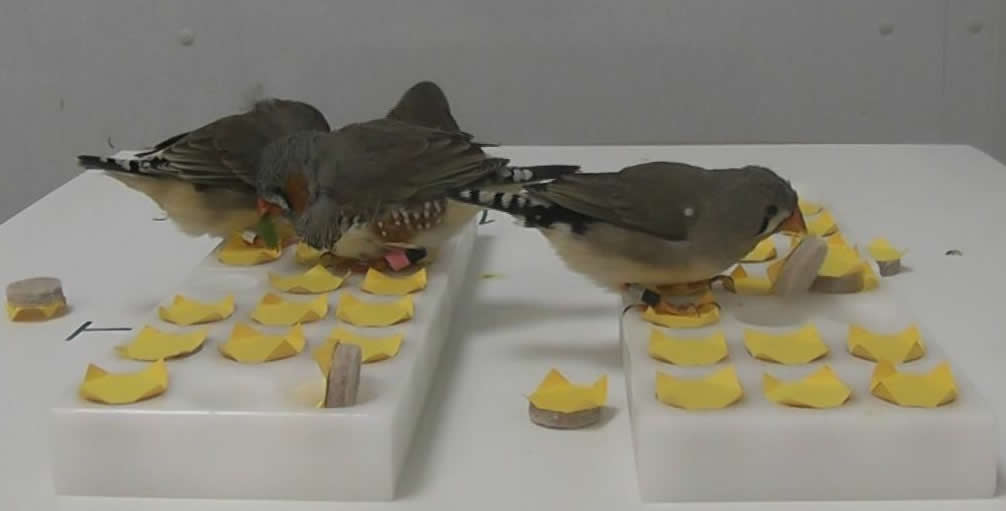|
|||||||||||||||
|

CLICK ON weeks 0 - 40 and follow along every 2 weeks of fetal development
|
||||||||||||||||||||||||||||
|
|||||||||||||||||||||||||||||
|
|
Researchers say that spikes in stress in hatchlings may cue young birds that their parents are doing something wrong, triggering them to switch their social learning strategy and disregard parental approaches in favor of acquiring skills exclusively from other birds in the flock. Stress cues and subsequent behavioral changes allow the juvenile birds to bypass a "potentially maladaptive source of information" - a result of low-quality parental interest, or food scarcity at birth - in order to avoid a "bad start in life," say researchers. Stress creates changes in patterns of social interactions by impeding population-wide processes, such as efficient migration and the establishment of bird culture.
The research team took 13 broods of zebra finch hatchlings and in each brood fed half of the chicks the stress hormone corticosterone dissolved in peanut oil, and the other half with just plain peanut oil (their control siblings). The chicks were fed corticosterone each day from the age of 12 days, for 16 more days. Once the chicks reached nutritional independence, they were released with their families into free-flying aviaries. Researchers then tracked their social foraging networks. Unique radio tags or PIT tags (Passive Integrated Transponder), about the size of a grain of rice, had been inserted in each bird. When a bird visited a feeder, the bird's PIT tag was scanned allowing researchers to know exactly who was foraging where, when and with whom.
Using the feeder visit data, researchers were able to define finch social foraging networks over the course of 40 days. They found that the juveniles fed the stress hormone were less likely to spend time with their parents, spending more time with unrelated birds, and were far less choosy about which birds they foraged with. Whereas the control group stuck more closely to their parents and foraged more consistently with the same flock mates. To test whether these stress-hormone induced differences in social network positions affected who learned from whom, Boogert devised a food puzzle for the birds, and recorded exactly when each bird started solving it. In the new test, birds had to flip the lids off the top of a grid of holes to reach the spinach food reward underneath. All other feeders were removed from the aviaries, as researchers filmed a series of nine one-hour trials over three days, monitoring and scoring how each bird learned to get to the spinach. They found while the control group of juveniles also learned from some unrelated adults, they principally copied their parents to learn how to get the spinach. In sharp contrast, the developmentally-stressed chicks exclusively copied unrelated adults - not one looked to a parent to figure out the key to the spinach puzzle. In fact, stressed juvenile birds actually solved the task sooner than their control siblings — despite not using parents as role models. Boogert believes this may be because they relied more on trial-and-error learning, or because they copied a large number of unrelated adults rather than just one of their two parents and simply got the key idea sooner.
Abstract Highlights This is an open access article under the CC BY license (http://creativecommons.org/licenses/by/4.0/).
|
||||||||||||||||||||||||||||


